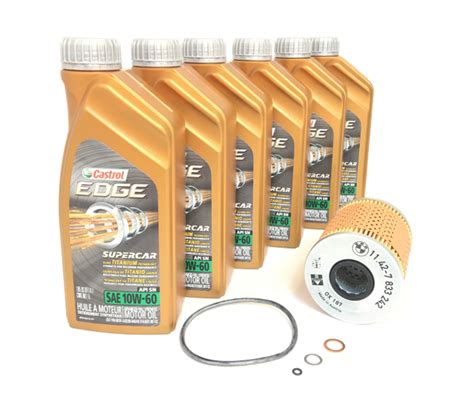Maintain your BMW E46 M3's performance with a proper oil change. Our guide provides step-by-step instructions and essential tips for a successful DIY oil change.

e46 M3 Oil Change: A Comprehensive Guide for BMW Enthusiasts
Introduction
The BMW e46 M3 is a legendary sports car known for its exceptional performance and handling. To maintain its optimal performance, regular maintenance is crucial, including regular oil changes. This comprehensive guide will provide you with detailed instructions, tips, and注意事项on how to perform an oil change on your e46 M3. Whether you're a seasoned DIY enthusiast or a novice mechanic, this guide will empower you to tackle this task with confidence.
Safety First: Preparing for the Oil Change
Before you begin the oil change process, it's essential to ensure your safety and the safety of your vehicle. Gather the necessary tools and materials, including:
* New oil filter and oil (check your owner's manual for the recommended type and quantity)
* Oil drain pan with a capacity of at least 5 quarts
* Funnel
* Wrench or socket set
* Rags or paper towels
* Gloves
* Safety glasses
Once you have gathered the necessary supplies, park your e46 M3 on a level surface and engage the parking brake. Allow the engine to cool down if it has been recently driven to prevent burns. Raise the vehicle using a jack and jack stands to provide safe access to the underside of the car.
Step-by-Step Guide to Changing the Oil
1.
Locate the Oil Drain Plug:
Using a flashlight if necessary, find the oil drain plug located on the bottom of the oil pan. It is typically a 17mm bolt.
2.
Place the Oil Drain Pan:
Position the oil drain pan directly underneath the oil drain plug to catch the old oil. Ensure the pan is large enough to hold at least 5 quarts of oil.
3.
Loosen the Oil Drain Plug:
Using the appropriate wrench or socket, carefully loosen the oil drain plug counterclockwise. Be prepared for the oil to start flowing out immediately.
4.
Allow the Oil to Drain:
Allow all of the old oil to drain out completely. This may take several minutes. Do not reinstall the oil drain plug until all of the oil has drained out.
5.
Replace the Oil Drain Plug:
Once all of the oil has drained out, reinstall the oil drain plug. Tighten the plug securely using the appropriate wrench or socket.
6.
Locate the Oil Filter:
The oil filter is typically located near the top of the engine, close to the valve cover. It is usually a cylindrical-shaped component with a black or blue cap.
7.
Remove the Oil Filter:
Using an oil filter wrench or a wrench and rag, carefully loosen the oil filter by turning it counterclockwise. Be careful not to spill any oil.
8.
Apply a Thin Coat of New Oil to the Gasket:
Before installing the new oil filter, apply a thin coat of new oil to the gasket using your finger or a rag. This will help create a seal and prevent leaks.
9.
Screw on the New Oil Filter:
Hand-tighten the new oil filter onto the oil filter housing. Do not overtighten the filter, as this can damage the gasket.
10.
Add New Oil to the Engine:
Using the funnel, carefully pour the recommended amount of new oil into the oil filler cap on the top of the engine. Refer to your owner's manual for the exact quantity.
11.
Check the Oil Level:
Start the engine and let it run for a few minutes. Once the engine is warmed up, turn it off and wait a few minutes for the oil to settle. Check the oil level using the dipstick located near the oil filler cap. The oil level should be between the "full" and "add" marks on the dipstick.
Additional Tips and Considerations
* Always use the type of oil specified in your owner's manual. Using the wrong type of oil can damage your engine.
* Consider changing the oil filter housing gasket along with the oil filter to prevent leaks.
* If you notice any signs of oil leaks, such as oil spots on your driveway or garage floor, have your car inspected by a qualified mechanic immediately.
* Keep a record of your oil changes, including the date, mileage, and type of oil used. This information can be helpful for diagnosing problems and maintaining your car's value.
Conclusion
By following the steps outlined in this comprehensive guide, you can confidently perform an oil change on your e46 M3. Regular oil changes are essential for maintaining optimal performance and extending the lifespan of your vehicle. If you have any doubts or concerns, it's always advisable to consult with a qualified mechanic to ensure the job is done correctly.


